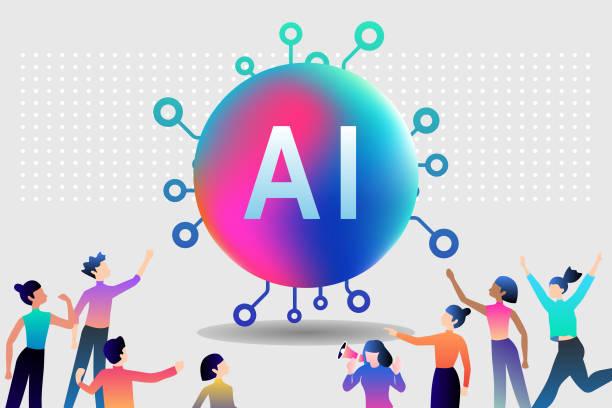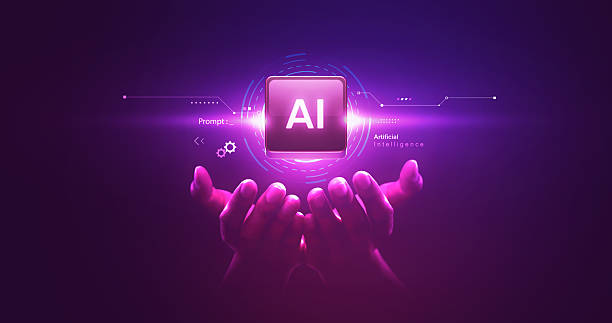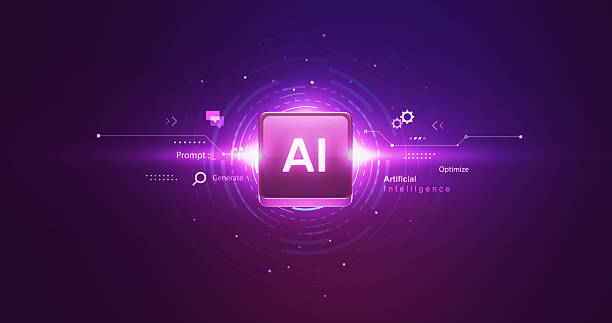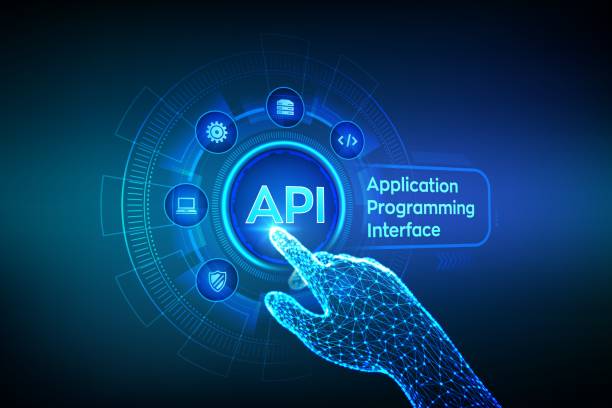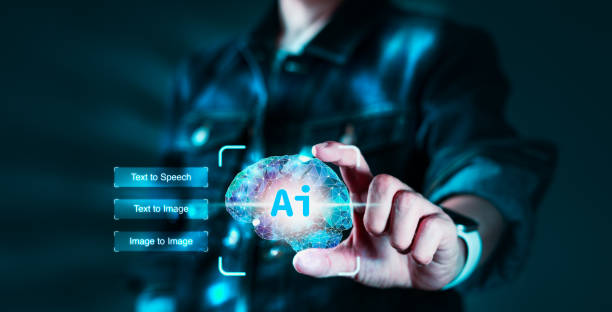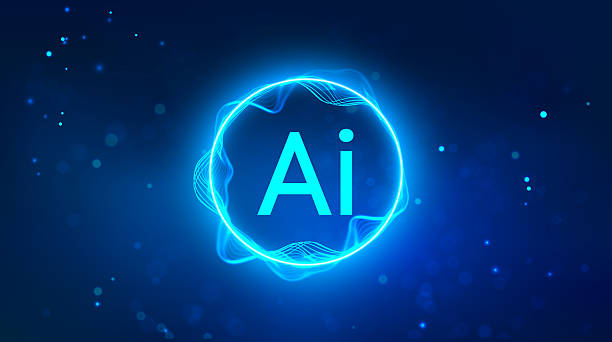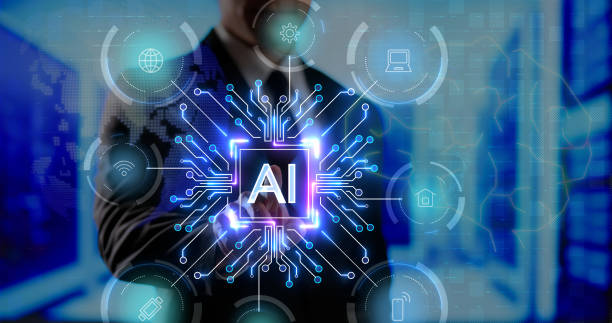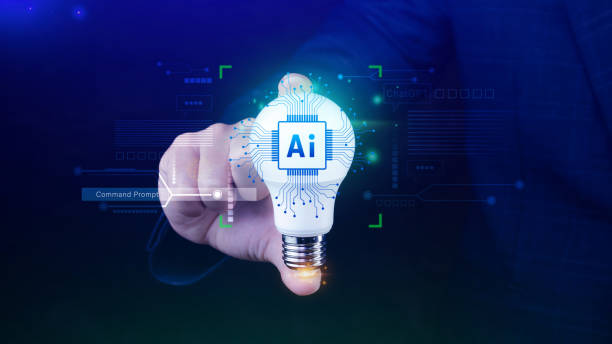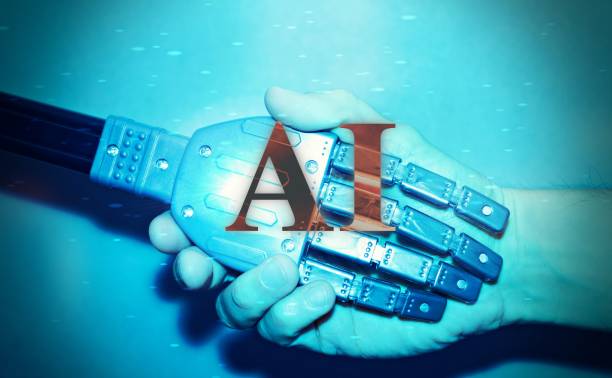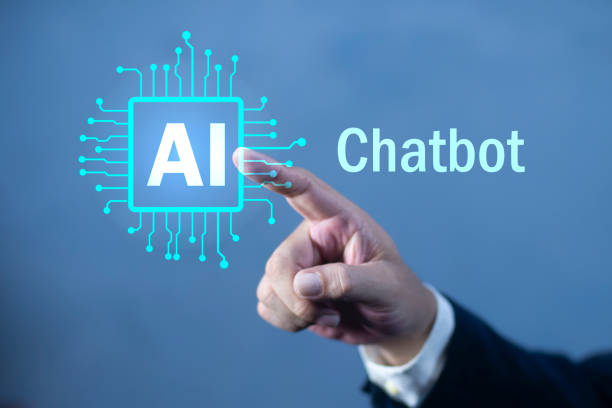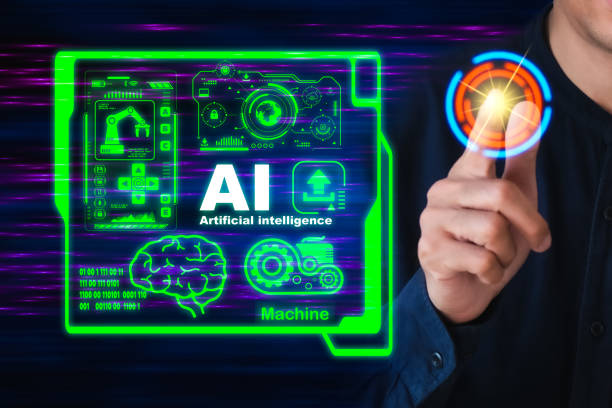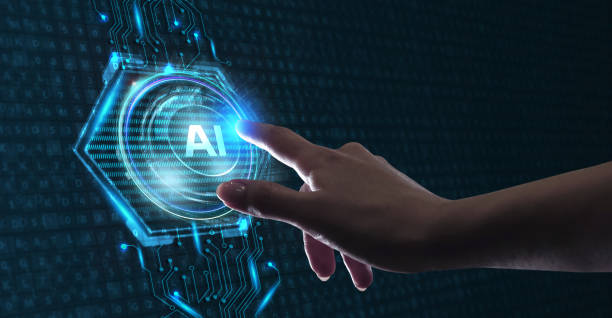What is an AI Robot and what are its applications?
An Artificial Intelligence (AI) robot is a combination of two key technologies: Artificial Intelligence (AI) and robotics.
Simply put, these robots are machines that, using AI algorithms, are capable of performing tasks that typically require human intelligence.
These tasks include learning, reasoning, problem-solving, natural language understanding, and even emotion detection.
Artificial intelligence enables robots to interact with their environment, make informed decisions, and improve their performance.
The applications of AI robots are vast and have impacted almost all industries.
In the manufacturing industry, robots can perform repetitive and dangerous tasks with high precision and speed.
In healthcare, robots are used for precise surgeries, patient rehabilitation, and providing personalized care.
In the service sector, robots can act as virtual assistants, customer responders, and support service providers.
Even in homes, smart robots can assist with daily chores such as cleaning, cooking, and elder care.
Due to their flexibility, learning capability, and ability to perform complex tasks, AI robots are rapidly becoming an essential tool in the modern world.
Are you losing customers due to your e-commerce site’s outdated appearance or slow speed? Rasaweb’s expert team solves these problems with professional e-commerce website design!
✅ Increased customer trust and brand credibility
✅ Stunning speed and excellent user experience
Get a free consultation with Rasaweb now ⚡
Main Components of an AI Robot
An AI robot is composed of several main components that work together to enable intelligent task performance.
These components include sensors, processors, actuators, and AI software.
Sensors are responsible for receiving information from the surrounding environment.
These sensors can include cameras, microphones, temperature sensors, pressure sensors, and proximity sensors.
Processors are the robot’s brain, responsible for processing information received from sensors, executing AI algorithms, and making decisions.
The processing power of processors plays a significant role in the robot’s speed and accuracy of performance.
Actuators are responsible for performing physical actions.
These actuators can include motors, arms, wheels, pumps, and other mechanical devices.
AI software is the heart of the robot and includes machine learning algorithms, neural networks, reasoning systems, and other AI techniques.
This software enables the robot to learn from data, recognize patterns, make informed decisions, and interact with its environment.
Interaction and coordination among these components are essential for the proper and efficient operation of an AI robot.
Click here to preview your posts with PRO themes ››
Types of AI Robots Based on Application
AI robots are divided into various types based on their application.
Industrial robots are used for repetitive and dangerous tasks in factories.
These robots typically have strong and precise robotic arms and can assemble, paint, and package parts with high speed and accuracy.
Service robots are designed to provide services to humans.
These robots can act as virtual assistants, customer responders, support service providers, and even caregivers.
Medical robots are used to assist doctors in diagnosing and treating diseases.
These robots can perform precise surgeries, accurately dispense medications, and assist in patient rehabilitation.
Military robots are used to perform dangerous and difficult tasks on the battlefield.
These robots can act as soldiers, spies, and bomb disposal units.
Space robots are used for space exploration and conducting scientific research on other planets.
These robots can collect soil samples, capture high-quality images of planetary surfaces, and gather data related to atmospheric and geological conditions.
Each type of AI robot has its own specific features and capabilities and is designed to perform particular tasks.
| Robot Type | Application |
|---|---|
| Industrial | Performing repetitive and dangerous tasks in factories |
| Service | Providing services to humans |
| Medical | Assisting doctors in diagnosing and treating diseases |
| Robot Type | Application |
|---|---|
| Military | Performing dangerous tasks on the battlefield |
| Space | Space exploration and scientific research |
Advantages and Disadvantages of Using AI Robots
The use of AI robots offers many advantages.
These robots can perform tasks with higher speed and accuracy than humans, operate in dangerous and inaccessible environments, and work around the clock without fatigue.
This leads to increased productivity, reduced costs, and improved quality of products and services.
However, the use of AI robots also has disadvantages.
One of the most significant drawbacks is job displacement for humans.
With the introduction of robots into the job market, many traditional jobs are disappearing, and humans need to learn new skills to compete with robots.
Furthermore, ethical issues related to the use of AI robots, such as accountability for robot errors and protecting individual privacy, are important challenges that need to be addressed.
Moreover, over-reliance on robots can lead to a decline in human skills and create security problems.
Therefore, the use of AI robots must be carefully planned and executed to maximize their benefits and minimize their drawbacks.
AI robots can help us in many areas.
Is your e-commerce site ready to attract maximum customers and boost sales? Rasaweb transforms your online business with modern and efficient e-commerce website designs.
✅ Increased speed and improved SEO
✅ Excellent user experience on mobile and desktop⚡ Get a free e-commerce website design consultation from Rasaweb!
What Will Be the Future of AI Robots?
The future of AI robots is very bright and full of potential.
With continuous advancements in AI, robotics, and information technology, AI robots in the future will be able to perform more complex tasks, interact better with humans, and play a more prominent role in our daily lives.
It is expected that AI robots will be widely used in various fields such as healthcare, education, transportation, agriculture, and manufacturing in the future.
For example, in healthcare, robots can act as skilled surgeons, caring nurses, and medical consultants, helping to improve the quality of healthcare services.
In education, robots can serve as private tutors, sports coaches, and academic advisors, assisting students in better learning.
In transportation, robots can function as self-driving vehicles, autonomous pilots, and traffic operators, helping to reduce accidents and improve traffic flow.
However, the development of AI robots requires attention to ethical, legal, and social issues to prevent misuse of this technology and ensure its benefits are fairly distributed.
AI robots have high potential to revolutionize our lives.
Challenges in the Development of AI Robots
The development of AI robots faces numerous challenges.
One of the most significant challenges is the scarcity of high-quality training data.
AI robots require a large volume of training data to learn and improve their performance.
Collecting and labeling this data can be very time-consuming and expensive.
Another challenge is the complexity of AI algorithms.
Designing and developing algorithms that enable robots to perform complex tasks requires high levels of knowledge and expertise.
Furthermore, issues related to the security and safety of AI robots are also important challenges that need to be addressed.
Robots should not be designed in a way that allows them to harm humans or jeopardize their personal information.
Also, ethical issues concerning the use of AI robots, such as accountability for robot errors and the protection of individual privacy, are significant challenges that must be considered.
To overcome these challenges, cooperation among researchers, industrialists, policymakers, and the general public is required.
AI robots face many challenges.
Impact of AI Robots on the Job Market
The introduction of AI robots into the job market will have widespread impacts on employment.
On the one hand, robots can replace humans in many repetitive, dangerous, and low-skilled jobs.
This will lead to job losses and an increase in unemployment rates.
On the other hand, robots can create new jobs that require new skills.
For example, AI specialists, robotics engineers, and robot maintenance technicians are among the jobs created by the development of AI robots.
For humans to compete with robots, they must learn new skills and adapt to changes in the job market.
Skills such as critical thinking, problem-solving, creativity, communication, and collaboration will become more important in the future.
Governments and educational organizations must also provide appropriate training programs to teach these skills to individuals.
AI robots have a significant impact on the job market.
| Impact | Description |
|---|---|
| Job losses | Replacement of humans in repetitive and low-skilled jobs |
| Creation of new jobs | Creation of specialized jobs in AI and robotics |
| Need for new skills | Importance of critical thinking, problem-solving, and creativity skills |
Ethical Issues Related to AI Robots
The development of AI robots raises numerous ethical issues.
One of the most important issues is accountability for robot errors.
If an AI robot makes a mistake that leads to harm to humans or financial damage, who will be responsible? Is the robot’s manufacturer, owner, or the robot itself responsible? Another issue is protecting individual privacy.
AI robots can collect and process large volumes of personal information.
How can the misuse of this information be prevented, and individual privacy be protected? Furthermore, issues related to discrimination and inequality are also important challenges that need to be addressed.
AI robots should not be designed to be discriminatory or exacerbate social inequalities.
To solve these issues, there is a need for ethical laws and regulations that govern the use of AI robots and protect the rights and interests of individuals.
AI robots raise important ethical questions.
Are your e-commerce site visitors leaving before making a purchase? Don’t worry anymore! With Rasaweb’s professional e-commerce website design services, permanently solve the problem of not converting visitors into customers!
✅ Significant increase in conversion rates and sales
✅ Unique and engaging user experience
⚡ Contact us now for a free consultation!
AI Robots and Machine Learning
Machine Learning is a key subfield of artificial intelligence that plays a significant role in the performance of AI robots.
Machine learning enables robots to learn from data, recognize patterns, make informed decisions, and improve their performance.
Without machine learning, robots would not be able to perform complex tasks or interact effectively with their environment.
There are various machine learning algorithms, each suitable for specific tasks.
Supervised learning, unsupervised learning, and reinforcement learning are among the most common types of machine learning algorithms.
In supervised learning, the robot is trained using labeled data.
In unsupervised learning, the robot identifies patterns using unlabeled data.
In reinforcement learning, the robot learns through trial and error and improves its performance.
The choice of the appropriate machine learning algorithm depends on the type of task the robot needs to perform.
AI robots and machine learning have a close relationship.
How to Build an AI Robot?
Building an AI robot is a complex and multi-stage process that requires knowledge and expertise in various fields such as robotics, artificial intelligence, programming, and electronics.
The first step is to define the robot’s purpose and determine the tasks it needs to perform.
Then, you need to select and acquire the necessary hardware components for the robot.
These components include sensors, processors, actuators, and a power source.
After acquiring the hardware components, you need to connect them and design and build a physical body for the robot.
Next, you need to develop the AI software required for the robot.
This software includes machine learning algorithms, neural networks, and reasoning systems.
After developing the software, you need to install it on the robot and test it.
Finally, you need to continuously train the robot and improve its performance.
Building an AI robot can be challenging.
Frequently Asked Questions
| Question | Answer |
|---|---|
| What is an AI robot? | It is a robot that uses AI capabilities to understand its environment, reason, learn, and make decisions to perform complex tasks autonomously. |
| What is the main difference between a regular robot and an AI robot? | AI robots can learn and adapt to their environment, whereas regular robots usually operate based on fixed, pre-programmed instructions. |
| In what fields are AI robots used? | In fields such as industry (production lines), medicine (robotic surgeries), services (customer support, smart vacuum cleaners), exploration (space and underwater), and entertainment. |
| How do AI robots learn? | They acquire new skills through Machine Learning and Deep Learning algorithms by analyzing large datasets and identifying patterns. |
| Can AI robots have emotions? | Currently, no. They can identify or simulate emotions, but they do not experience real emotions like humans. |
| What are the most important advantages of using AI robots? | Increased productivity, reduced human error, performance of dangerous or repetitive tasks, and provision of innovative and efficient services. |
| What challenges exist in the development of AI robots? | Need for abundant and high-quality data, complexity of algorithms, ethical issues, cybersecurity, and high research and development costs. |
| Are AI robots dangerous for humans? | With adherence to safe design principles and ethical regulations, no. Concerns are mostly related to social and economic impacts, such as changes in the job market. |
| What is an example of an AI robot in daily life? | Smart vacuum cleaner robots (like Roomba) that automatically map and clean homes, or smart voice assistants (like Siri and Alexa). |
| How is the future of AI robots predicted? | They are expected to become smarter, more autonomous, and capable of more complex interactions with humans, playing a more significant role in industry, medicine, transportation, and daily life. |
And other advertising agency services by Rasaweb in the field of advertising
- Smart Social Media: Designed for businesses looking to increase click-through rates by optimizing key pages.
- Smart Advertising Campaign: Professional optimization for user engagement using precise audience targeting.
- Smart Customer Journey Map: Designed for businesses looking to increase website traffic through personalized user experience.
- Smart Link Building: Professional optimization for online growth using Google Ads management.
- Smart Social Media: A professional solution for increasing click-through rates with a focus on custom programming.
And hundreds of other services in internet advertising, advertising consulting, and organizational solutions
Internet Advertising | Advertising Strategy | Advertorials
Resources
Future of Smart Robots
Challenges of Robotics and Artificial Intelligence
What is Artificial Intelligence? A Complete Guide
Great Transformation in Industry with Robotics and Artificial Intelligence
? To elevate your business in the digital world and reach the pinnacles of success, contact “Rasaweb Afarin” today and benefit from our professional services in multilingual website design, SEO, and digital marketing.
📍 Tehran, Mirdamad Street, next to the Central Bank, South Kazeroon Alley, Ramin Alley No. 6

